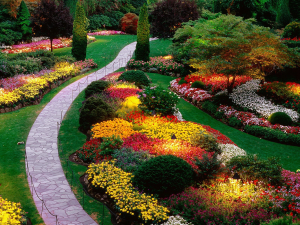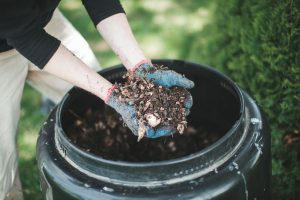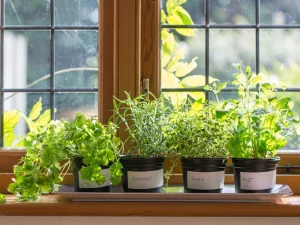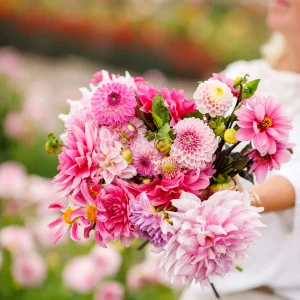
The Remarkable Health Benefits of Gardening
Welcome to the world of “Green Therapy where the art of gardening transcends mere hobby and becomes a powerful tool for enhancing your physical and mental well-being. If you’re a lifestyle enthusiast eager to delve into the advanced techniques, tips, and in-depth insights of gardening, you’ve come to the right place. In this article, we’ll explore the profound health benefits that gardening can offer and equip you with the knowledge and skills to take your green therapy to the next level.
The Healing Power of Greenery
Gardening isn’t just about planting flowers or vegetables; it’s about cultivating a connection with nature. Studies have shown that spending time in green spaces can reduce stress, anxiety, and depression. By immersing yourself in the vibrant colors and scents of your garden, you’ll tap into the therapeutic benefits of greenery. Nature has an incredible ability to heal, and your garden can serve as a haven for relaxation and rejuvenation. The mere act of being surrounded by greenery can lower cortisol levels, the stress hormone, and release endorphins, the “feel-good” neurotransmitters. This natural remedy for stress reduction can significantly improve your mood and overall emotional well-being.

Mindful Gardening
Gardening isn’t just about the final product; it’s a mindful journey. When you approach gardening with mindfulness, you enhance the experience and derive more significant benefits from it. The principles of mindfulness, such as being present in the moment and focusing on the task at hand, can be applied to your gardening practice.
When you engage in mindful gardening, you sharpen your attention to detail. You notice the subtle changes in your plants, the textures of leaves, and the intricate beauty of nature. This heightened awareness not only improves your gardening skills but also brings a sense of inner calm. Mindful gardening is a form of meditation in motion, allowing you to immerse yourself fully in the present moment and escape from the stresses of daily life.
| Benefit | Details |
|---|---|
| Stress Reduction | Gardening helps lower cortisol, the stress hormone. |
| Mood Enhancement | Engaging with nature elevates your mood and promotes positivity. |
| Enhanced Well-being | Green therapy fosters overall emotional and mental health. |
| Improved Focus | Mindful gardening sharpens your attention to detail. |
| Inner Calm | Practicing mindfulness in the garden reduces stress and anxiety. |
| Increased Productivity | Advanced techniques lead to higher yields. |
| Pest Management | Learn to protect your garden from common pests. |
| Aesthetic Appeal | Design and landscaping enhance the beauty of your garden. |
| Functional Garden Spaces | Create areas for relaxation, entertainment, and gardening. |
Advanced Techniques
If you’re ready to take your gardening to the next level, it’s time to explore advanced techniques for achieving more abundant and satisfying harvests. Whether you’re growing vegetables, herbs, or ornamental plants, these strategies can make a significant difference in your gardening success. One crucial aspect of successful gardening is soil health. Advanced gardeners know the importance of soil enrichment and employ techniques such as composting, mulching, and using organic fertilizers to create a nutrient-rich environment for their plants. By understanding the unique nutritional needs of your plants, you can maximize their growth potential. Another challenge that advanced gardeners tackle is pest management. Common garden pests can wreak havoc on your plants, but with the right strategies, you can protect your garden effectively. Learning about integrated pest management, beneficial insects, and natural remedies can help you maintain healthier plants and minimize the need for chemical pesticides.
Gardening for Stress Relief and Mental Clarity
Gardening has a unique ability to provide stress relief and enhance mental clarity. Creating a calming garden space is essential for those seeking solace from the demands of daily life. Your garden can be a retreat where you find peace and tranquility. Repetitive gardening tasks, such as weeding, pruning, and watering, can be therapeutic. They allow you to disconnect from the noise of the outside world and focus on simple, repetitive motions.

Creating Your Oasis
Creating a visually appealing and harmonious outdoor space is not only aesthetically pleasing but also contributes to your overall well-being. Here are some key principles to consider:
Aesthetic Appeal: Effective garden design focuses on aesthetics. Consider the colors, shapes, and textures of your plants and how they interact. Create focal points and visual interest through thoughtful placement.
Functional Garden Spaces: A well-designed garden isn’t just beautiful; it’s functional. Create areas for relaxation, entertainment, and gardening. Define pathways and seating areas to make your garden accessible and inviting.
Sustainability: Embrace eco-friendly gardening practices by incorporating native plants, using water-efficient irrigation, and minimizing the use of chemical fertilizers and pesticides. Sustainable gardening benefits both your garden and the environment.
Conclusion:
“Green Therapy: The Remarkable Health Benefits of Gardening” has taken you on a journey into the world of gardening as a powerful tool for enhancing both your physical and mental well-being. We’ve explored the myriad benefits that gardening offers and provided you with advanced techniques, tips, and insights to take your green therapy to new heights. From the healing power of greenery that reduces stress and enhances your mood to the mindfulness of gardening, which brings inner calm and focus, you’ve seen how connecting with nature can profoundly impact your life. Advanced techniques for bountiful harvests and effective pest management equip you with the knowledge to maximize your gardening success.
















